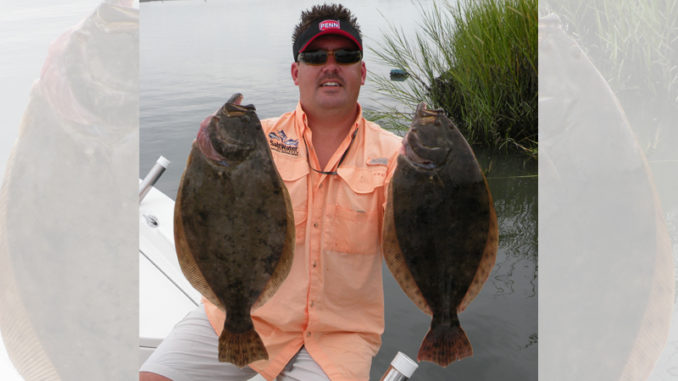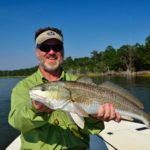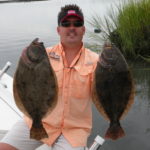
A rising tide doesn’t have to end your fishing trip, especially during the summer. Water rushing into an estuary can set up a good bite in some great spots.
In the Carolinas, temperatures soar during the peak summer months. Daytime temperatures are in the 90s almost every day. Anglers looking to fish during the best conditions should look at tide charts and be ready to take advantage of rising water if they want to bust a limit of inshore targets.
Thanks to the moon’s gravitational effects, the world’s coastal regions are shaped by tides, periods of high and low water. A typical tide can bring 4 feet of change. But a new or full moon can expand the range to more than 6 feet — a dramatic effect in many ways.
For starters, the change in water depth will eliminate or open up available habitat in coastal bays and estuaries. But the greatest effect over the summer has little to do with water depth. Inshore fish —redfish, speckled trout and flounder —respond to a change in the water’s physical properties during different phases of the tide.
Guide Jot Owens of Wrightsville Beach, N.C., is on the water at all phases of the tide and every water condition. And he’s paid to find fish for his clients — even on a rising tide that might send many anglers back to the boat ramp.
“I can’t plan my trips around the tides especially when I have clients on the schedule to be here every day,” he said. (910-233-4139) “Fortunately, I can catch fish on any tide. The tide affects my locations I fish and sometimes the species I target.”
Rising tides bring cool water to inshore areas
“Water temperatures in the estuaries can easily reach 85 degrees in the summer, and fish become lethargic,” said Owens (910-233-4139). “But in the hottest parts of the summer, the ocean is always cooler than the inshore water. And a rising tide will flush cooler water inside. That can turn on a bite outside of the typical early morning and late-evening scenarios.”
Owens looks for a spike in feeding activity on rising water from July through September. While incoming water can trigger a bite, the heavy flows also open up expansive regions of water where baitfish can go to escape predators. However, in some areas baitfish and shrimp are vulnerable on periods of rising water. And this creates hot spots for honing in on reds, flounder or specks.
“Fish can get spread out some on higher tides. But if you find places where the bait can’t hide — like hard banks and grass-lined banks that meet dry land — fish will be there ambushing bait,” he said.
Baitfish, shrimp, and crabs slide into shallow waters to avoid predators. Anywhere they can find structure or grass, they will move in for refuge and shade. Estuaries are covered with natural cover, from marsh grass and oysters to an entire gamut of man-made features. Owens makes those features his hot spots on rising water.
Look for docks during high water
“Docks and marinas provide shade and plenty of hard structure where bait can’t bury themselves in the grass. They are great high-water scenarios,” he said.
While marinas can provide good places on higher water, the coastal areas along the coast of both Carolinas are littered with docks and bulkheads. When the water rises, the bait gets trapped up against bulkheads or along hard, muddy banks. They become great places for anglers to find feeding fish.
“As the water gets higher, move up a little closer to the bank around the dock pilings. The fish will move up shallow when they can to find bait,” said Owens, who runs Jot It Down Fishing Charters.
Throughout the summer, redfish, trout and flounder have plenty of foraging options. But the best feeding opportunities on rising water will lie closer to shore in shallow sections of estuaries. As a result, anglers can experiment with lure selections and expect positive results.
Owens said a rising tide sets the stage for topwater lures because fish are cruising the shallow margins. And topwater is an ideal presentation in these areas.
“Many of the high-water places I fish are actually dry on lower tides. Redfish will be cruising the edges looking for baitfish that have pushed shallow. Topwater plugs are fantastic,” he said.
Sub-surface lures are also good bets
In addition to topwater plugs, anything that can be retrieved slowly and just under the surface will grab the attention of a passing gamefish, too. Quite often, Owens will pull out a large spinnerbait with willow-leaf blade, make a cast, and retrieve it slowly.
“Spinnerbaits are very effective, especially when the water is stained or off-color in these shallow spots,” he said.
An incoming tide often brings super-clear water into the marsh, and a less-intrusive presentation may be needed. The bright, shiny presentations of spinnerbaits and topwater plugs can spook fish in clear water. That’s when Owens turns to a popping cork and a scented, soft-plastic bait.
“Rattling and popping corks work real well. Rigged with a 3-inch Gulp shrimp, they are hard to beat for catching speckled trout, flounder and redfish on high water in shallow areas,” said Owens. He uses a 40-pound leader between 12 and 18 inches long and a light jighead.
Anglers can’t always expect every day to bring perfect tides and weather conditions. But when the tides bring water into an estuary, they should never put their tackle away. Some of the day’s best fishing can be during periods of rising water.
Click here for tips on fishing creeks that have been ruined by flooding.





